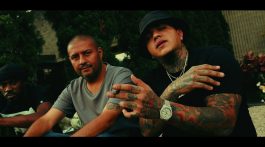
Second Officer Gives an Account of the Shooting at Ft. Hood
Second Officer Gives an Account of the Shooting at Ft. Hood
KILLEEN, Tex. — Sgt. Kimberly D. Munley has been applauded as a hero across the nation for shooting down Maj. Nidal Malik Hasan during the bloody rampage at Fort Hood
last week. The account of heroism, given by the authorities, attracted
the attention of newspapers, the networks and television talk shows.
Senior Sgt. Mark Todd, of the Killeen Police Department, was outside the visitors center at Fort Hood on Thursday morning.
Secretary of Defense Robert M. Gates met with Sgt. Kimberly D. Munley at a hospital in Ft. Hood, Texas, on Tuesday.
But the initial story of how she and the accused gunman went down in an exchange of gunfire now appears to be inaccurate.
Another officer, Senior Sgt. Mark Todd, 42, said in an interview
Thursday that he fired the shots that brought down the gunman after
Sergeant Munley was seriously wounded. A witness confirmed Sergeant
Todd’s account.
In the interview, Sergeant Todd said he and
Sergeant Munley had pulled up to the scene in separate cars at the same
time. He said they began running up a small hill toward the building
that held the processing center where unarmed soldiers reported for
check-ups and vaccinations before deployment. The gunman was already
outside, Sergeant Todd recalled.
“That’s when the
bystanders were pointing in his direction,” he said. “And
when we popped up, he was standing there, and we shouted our commands
— ‘Police, drop your weapons!’ — and he just
opened fire on us.”
Sergeant Todd said he was slightly in
front of Sergeant Munley on the hill. “Once we took fire, she
broke right and I broke left,” he said.
Sergeant Todd said
he did not see Sergeant Munley get shot. He said he started to circle
around the building, but then backtracked as panicked bystanders told
him of the gunman’s movements.
“As it unfolded, I
went a different direction and he went a different direction, and we
met up in the front of the building,” he said.
Sergeant Todd said he then saw Sergeant Munley on the ground, wounded. He shouted again at the gunman to drop his weapon.
“Once
I came around the front of the building, I caught his attention again,
started shouting commands, and then he opened up a second time,”
Sergeant Todd said. “And that’s when I returned fire,
neutralized him and secured him.”
Citing the ongoing
investigation, Sergeant Todd declined to give more details about the
precise positions of Major Hasan, Sergeant Munley and himself during
the gunfight. He also would not say how many times he shot Major Hasan
with his 9 mm pistol, or what Major Hasan was doing. The whole
encounter lasted only 45 seconds, he said.
Sergeant Todd’s account agrees with that of a witness who was at the processing center when the shooting occurred.
The
witness, who asked not to be identified, said Major Hasan wheeled on
Sergeant Munley as she rounded the corner of a building and shot her.
Then Major Hasan turned his back and started putting another magazine
into his semiautomatic pistol.
Sergeant Todd then rounded another
corner of the building, found Major Hasan fumbling with his weapon and
shot him, the witness said.
How the authorities came to issue the
original version of the story, which made Sergeant Munley a national
hero for several days and obscured Sergeant Todd’s role, remains
unclear. (Military officials also said for several hours after the
shooting that Major Hasan had been killed; he survived.)
Six days after the shooting, the military has yet to put out a full account of what happened.
On
Thursday, Christopher Grey, a spokesman for Army Criminal Investigation
Command, told reporters that Sergeants Todd and Munley both
“engaged the armed suspect.”
“I would caution
you from drawing final conclusions until all the evidence is
analyzed,” Mr. Grey said at a news conference at Fort Hood, where
he announced that Major Hasan had been charged in a military court with
13 counts of premeditated murder.
On Wednesday, Lt. Col. John
Rossi, the fort’s deputy commander, refused to take questions
about who shot Major Hasan or why the initial reports said it had been
Sergeant Munley rather than Sergeant Todd.
“These questions are specific to the investigation, and I am not going to address that,” Colonel Rossi said.
Public
affairs officials also declined to make Chuck Medley, the director of
emergency services at the post, available. It was Mr. Medley, who
oversees the post’s civilian police and fire departments, who
gave the first account of how Sergeant Munley stopped the gunman.
Liz Robbins and Jonathan Miles contributed reporting from New York












No Comment